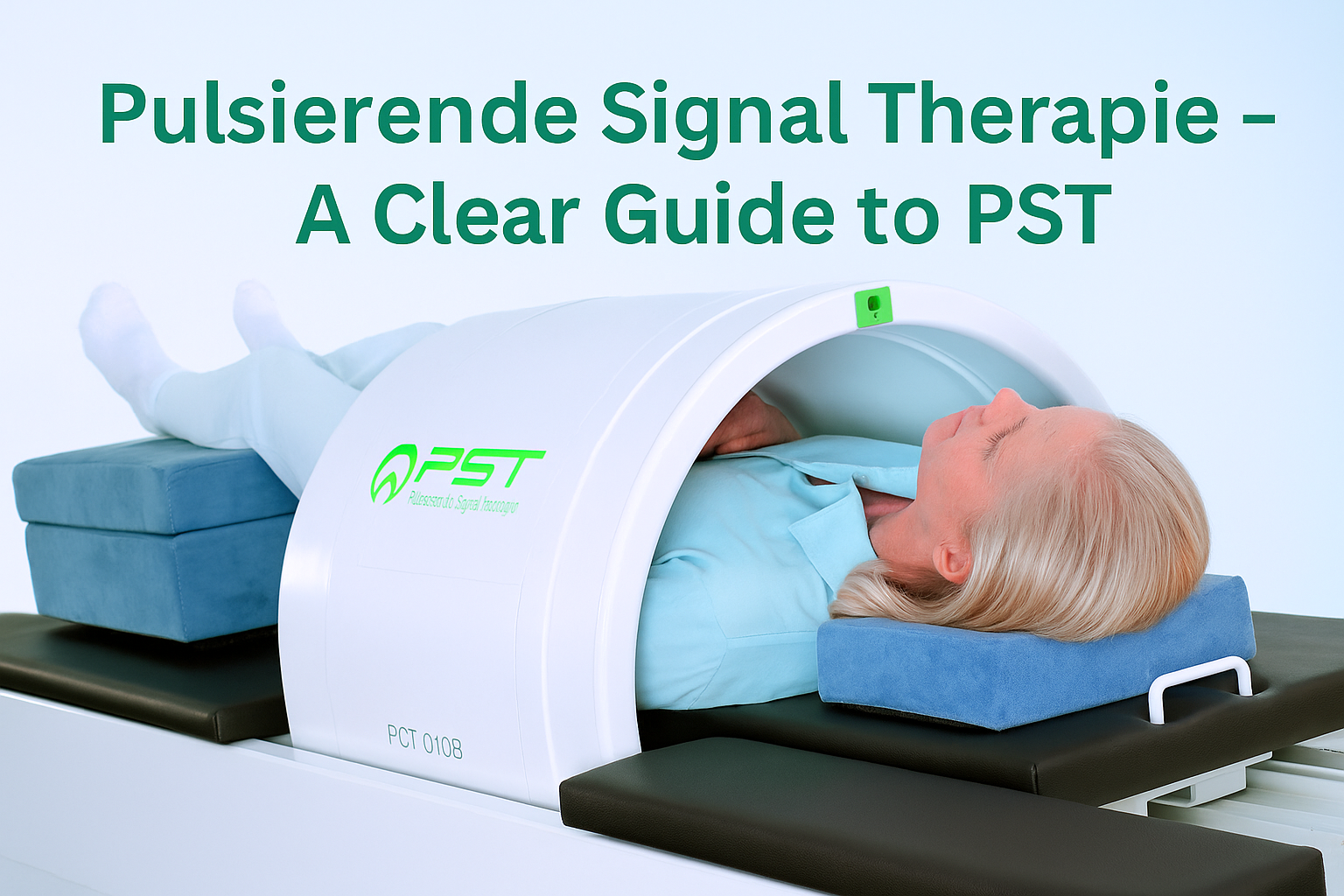Pulsierende Signal Therapie is gaining interest as a non-invasive therapy. This article covers its meaning, Wirkung (effect), application in PST Schmerztherapie, role in Knochenheilung durch Signaltherapie, patient Erfahrungen, and use as a nicht-invasive Therapie Gelenke.
Introduction
Pulsierende Signal Therapie (PST) is an alternative, non-invasive treatment. It uses electromagnetic pulses to help the body heal. In this article, we explore how PST works, its benefits, and what people say about it.
What Is Pulsierende Signal Therapie?
Pulsierende Signal Therapie (PST) is a method that sends low-frequency, pulsating electromagnetic signals into the body. These signals aim to mimic natural cellular communication and stimulate repair. The therapy is safe, gentle, and free of injections or surgery.
PST – Scientific Foundations and Wirkungsweise
PST relies on the body’s natural bioelectric activity. Cells communicate via electrical impulses. Injury or disease can disrupt this. Pulsating signals aim to restore those rhythms.
These signals work by:
- Stabilizing cell membrane potential and metabolism
- Activating ion channels like calcium and sodium
- Encouraging chondrocytes to form cartilage (Knorpelbildung)
- Enhancing microcirculation, thus feeding tissues
- Modulating pain by calming nerve signals and reducing inflammation
This is how PST Wirkung unfolds at the cellular level.
PST Schmerztherapie – Pain Relief Approach
As a PST Schmerztherapie, PST helps manage joint and musculoskeletal pain. It is especially popular for osteoarthritis and chronic joint issues. The therapy reduces stiffness and improves mobility.
Knochenheilung durch Signaltherapie
PST can also promote Knochenheilung durch Signaltherapie. It stimulates osteoblasts (bone-growing cells) and improves bone tissue repair. Studies on PEMF show benefits for bone healing, which support the theory behind PST.
How PST Is Applied
Treatment typically involves placing the affected area—knee, spine, hip—in a coil or air-spule. Signals are pulsed for about one hour. Standard cycles run from 9 to 12 sessions on consecutive weekdays. Home versions (PST Mobil) exist but professional application is preferred.
PST Schmerztherapie – Applications in Practice
PST is used for a range of conditions:
- Arthrose (osteoarthritis) of joints
- Osteoporose (bone density loss)
- Degenerative Wirbelsäule changes and back pain
- Sports injuries, including tendon and ligament damage
- Fibromyalgie and soft tissue pain
- Sehnen- und Muskelbeschwerden
- Entzündliche Gelenkerkrankungen (Arthritis)
Evidence, Effectiveness & Controversy
PST is controversial in medical circles. The German Federal Physicians and Insurance Committee (G-BA) reviewed PST in 1998 and found the evidence lacking in strength. They decided not to recognize PST as reimbursable therapy.
Many sources note that scientific backing remains weak despite hopeful claims. Thus, PST should be viewed as complementary, not an accepted standard.
PST Patienten Erfahrungen (Experiences)
Many patients report improved mobility and pain relief. Some note faster recovery from sports injuries and better everyday movement. However, there might be a temporary flare-up of symptoms, which providers sometimes interpret as a positive sign.
Non-Invasive Joint Therapy
PST is a nicht-invasive Therapie Gelenke. It avoids surgery, injections, or drugs. Treatments are gentle and safe. Side effects are rare. But it is not suitable for everyone—for instance, those with pacemakers or during pregnancy.
Summary of Key Benefits
Let’s recap the advantages of PST:
- Non-invasive and pain-free
- Promotes regeneration of cartilage, bone, tendons
- Supports pain reduction and improved mobility
- No known serious side effects in most cases
- Can be applied at home (with proper equipment)
PST vs. Conventional Treatments
Conventional treatments for joint pain include medication, physical therapy, injections, or surgery. PST may help avoid or delay those interventions. It is complementary—not a replacement—especially when evidence is limited.
Conclusion
Pulsierende Signal Therapie (PST) is a nicht-invasive Therapie Gelenke that uses electromagnetic pulses to encourage healing in cartilage, bone, and soft tissue. It is known as a PST Schmerztherapie that may reduce pain and increase mobility. It may also aid Knochenheilung durch Signaltherapie and is supported by patients’ Erfahrungen. Scientific consensus remains limited, and authorities like the G-BA have deemed the evidence insufficient. Use PST as a complementary therapy, under medical advice, not as a sole treatment.
FAQs (Based on “People Also Ask”)
1. Wie wirkt die Pulsierende Signaltherapie?
PST sends low-frequency pulses to damaged tissues. It stabilizes cell membranes, activates ion channels, and improves circulation to support repair.
2. Wie viele Sitzungen braucht man?
A typical cycle is 9–12 sessions, each lasting about one hour, often over consecutive weekdays.
3. Ist die PST-Therapie sicher?
Generally yes. It is non-invasive, with few side effects. Avoid if you have a pacemaker or are pregnant. Consultation with a doctor is essential.
4. Kann PST die Knochenheilung fördern?
Yes. PST may boost osteoblast activity and support bone repair, though evidence is still emerging.
5. Gibt es Belege für PST?
Evidence is inadequate. A 1998 G-BA review found insufficient proof to support reimbursement. PST remains an alternative therapy with limited scientific validation.
